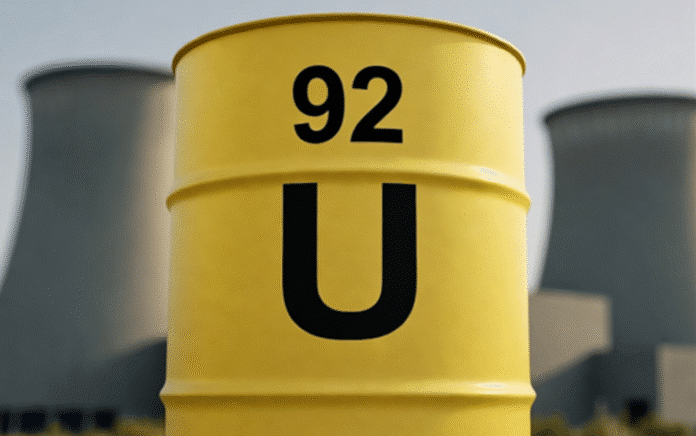|
IMPORTANT: The next SPECIAL SITUATIONS ALERT is coming pre-market Monday October 27th. In this edition of Katusa’s Investment Insights, we get you up to speed. |
Nuclear energy just got a timer.
On May 23, 2025, the White House signed three Executive Orders (EO’s) that fundamentally rewrote nuclear’s timeline.
By May 29, the Federal Register made it official.
The message was clear: America’s nuclear industry just shifted from geological time to Silicon Valley speed.

The Department of Energy mapped the endgame with surgical precision—get at least three test reactors to criticality by July 4, 2026.
Failure Is NOT an Option: The Orders in Plain English
Forget the bureaucratic word salad. Here’s what these orders actually do—and why nuclear executives are scrambling to rewrite their five-year plans:
EO 14301 stands up a DOE authorization lane for test reactors outside the National Laboratories and directs the Secretary to approve at least three reactors with a goal of criticality by July 4, 2026.
For 70 years, if you wanted to test a reactor, you begged for a slot at Idaho National Laboratory. The wait? Five years minimum. Cost? Don’t ask. Your competition in China? Already built three reactors while you waited.
Not anymore. Private test facilities are now legal. Full stop.
EO 14300/14301 torches the NRC’s favorite delay tactic—infinite safety re-reviews.
“NRC review shall focus solely on risks that may arise from new applications permitted by NRC licensure, rather than revisiting risks already addressed in DOE or DOD processes”
It means the NRC just lost its ability to relitigate settled science.
What used to take 10,000 pages and ten years now takes a reference number and a rubber stamp.
If DARPA says your reactor is safe, the NRC can’t pretend they need to check the math again.
The Department of Energy Isn’t Playing Around
Look at this timeline:
- June 18: DOE announces the new pathway
- June 25: Industry Day (7 days later)
- July 21: Applications due (26 days to prepare)
- August 12: Winners selected (22 days to decide)
- July 4, 2026: Three reactors go critical
Long gone are admin delays and paper shuffling, it’s gas pedal time.

That’s 381 days from announcement to atom-splitting.
The Manhattan Project took 1,226 days. Apollo 11 took 2,978 days.
- The DOE just gave nuclear startups less time than it takes to obtain a full building permit for multifamily housing in San Francisco.
11 companies are already selected.
And that sprint is already changing how money moves in the sector now.
Time compression doesn’t just accelerate sentiment—it pulls forward actual purchase orders.
Fuel contracts move from “someday” to “Tuesday.”
Engineering firms shift from proposals to mobilization.
The uranium fuel cycle takes 18-24 months from yellowcake to fabricated fuel assemblies. Companies that want reactors critical by July 2026 need fuel contracts now.
They’ll be the ones with permitted sites, credible manufacturing partners, and balance sheets that can fund 18 months of development without dilution.
And they’ll have uranium.
Lots of it, ready to go, right now.
Reading the Nuclear Tea Leaves
Smart investors are bypassing vanilla press releases—they’re now tracking procurement patterns.
When you strip away the noise, three indicators separate real progress from corporate rhetoric.
First, watch the dilution patterns. Nuclear development requires serious capital, and companies that have doubled their share count annually won’t survive the funding requirements ahead.
Strong projects attract institutional capital at reasonable terms. Weak ones print shares.
Second, follow the uranium procurement trail. Real projects leave evidence in quarterly filings—logistics expenses, conversion facility bookings, enrichment slots reserved. If a company claims they’ll achieve criticality by 2026 but shows no fuel cycle activity, they’re writing fiction.
Third, verify regulatory substance. An NRC docket number represents years of technical work. DOE pathway confirmation means engineers have reviewed actual designs.
Environmental permits mean state regulators have signed off. Checkmate.
Using the Choke Point to Make Cash
While headlines focus on reactor developers, the real bottlenecks lie in the fuel cycle, component manufacturing, and specialized construction capabilities.
Markets price certainty. For decades, nuclear’s uncertain timelines made it uninvestable for all but the most patient capital.
The White House just changed that calculation. And accelerated it.
Failure is not an option.
Washington compressed nuclear’s timeline from geological to commercial.
The timer is running. Fuel orders are accelerating. Construction contracts are mobilizing.
But while the crowd chases reactor developers with binary outcomes…
One company quietly assembled the perfect position: exposure to every project without the risk of any single failure.
They don’t build reactors. They don’t need permits.
They don’t fight regulators.
Instead, they’ve imported a proven model from precious metals that’s created billions in shareholder value…
Now applied to uranium’s supply squeeze.
As nuclear’s fast track changes unfold, they collect revenue streams from the one thing every reactor needs: fuel.
Monday morning pre-market, we reveal the ticker that cracked nuclear’s risk-reward equation.
The US Government has set the timer.
And the clock is ticking.
Regards,
Marin Katusa and the KR Special Situations Team
Details and Disclosures
Investing can have large potential rewards, but it can also have large potential risks. You must be aware of the risks and be willing to accept them in order to invest in financial instruments, including stocks, options, and futures. Katusa Research makes every best effort in adhering to publishing exemptions and securities laws.
By reading this, you agree to all of the following: You understand this to be an expression of opinions and NOT professional advice. You are solely responsible for the use of any content and hold Katusa Research, and all partners, members, and affiliates harmless in any event or claim.
If you purchase anything through a link in this email, you should assume that we have an affiliate relationship with the company providing the product or service that you purchase, and that we will be paid in some way. We recommend that you do your own independent research before purchasing anything.



